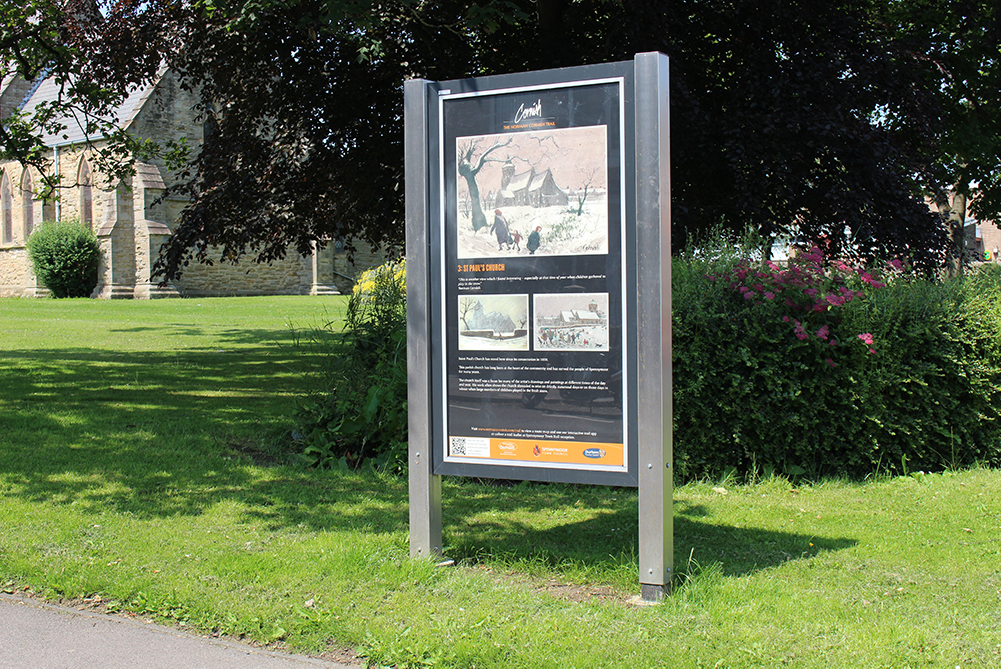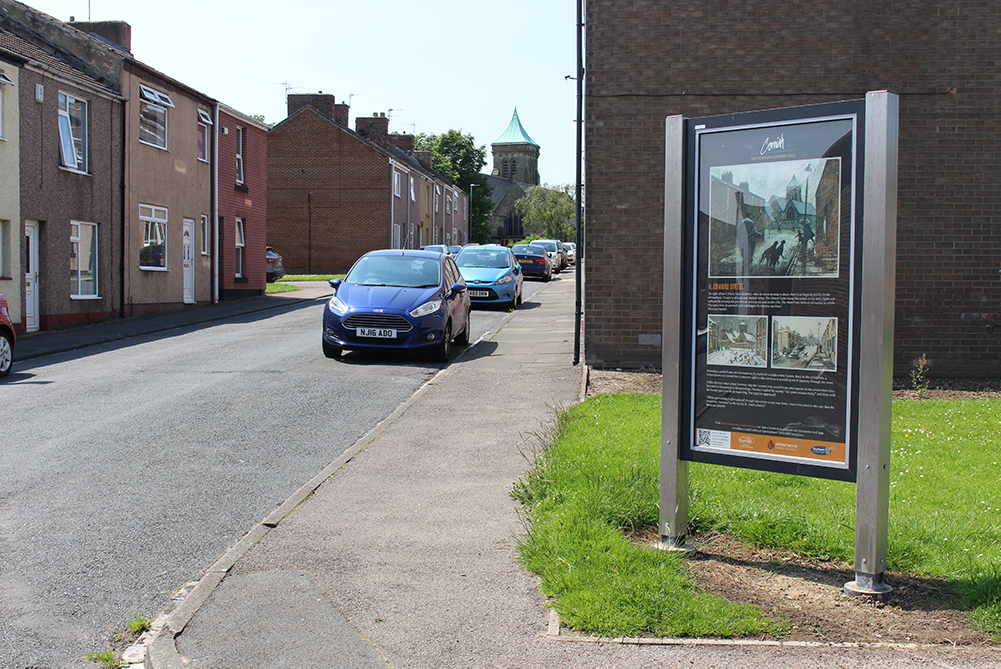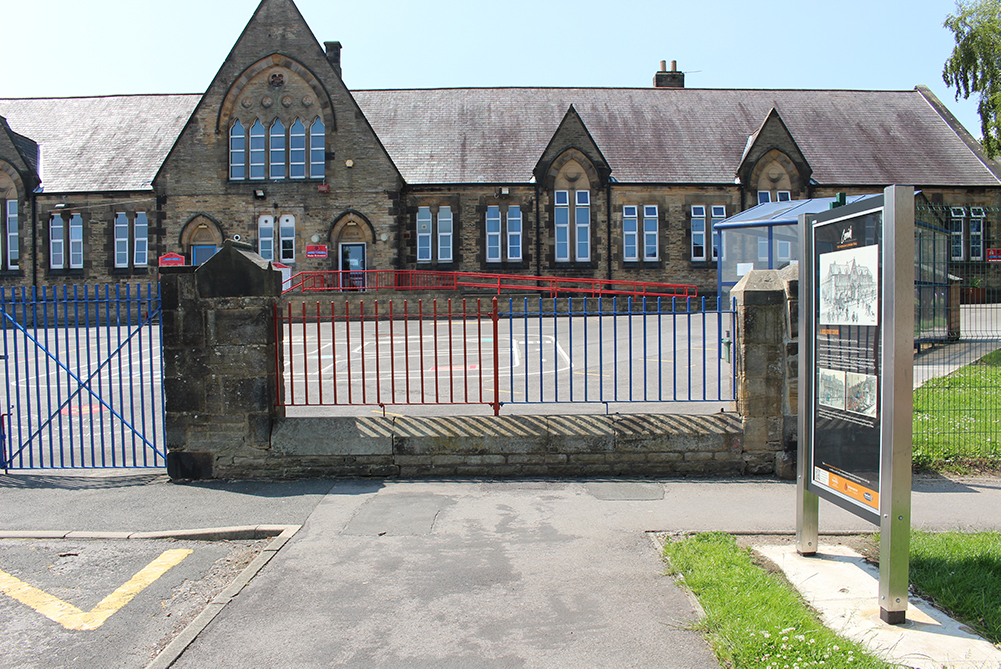Latest News
The Mystery Picture
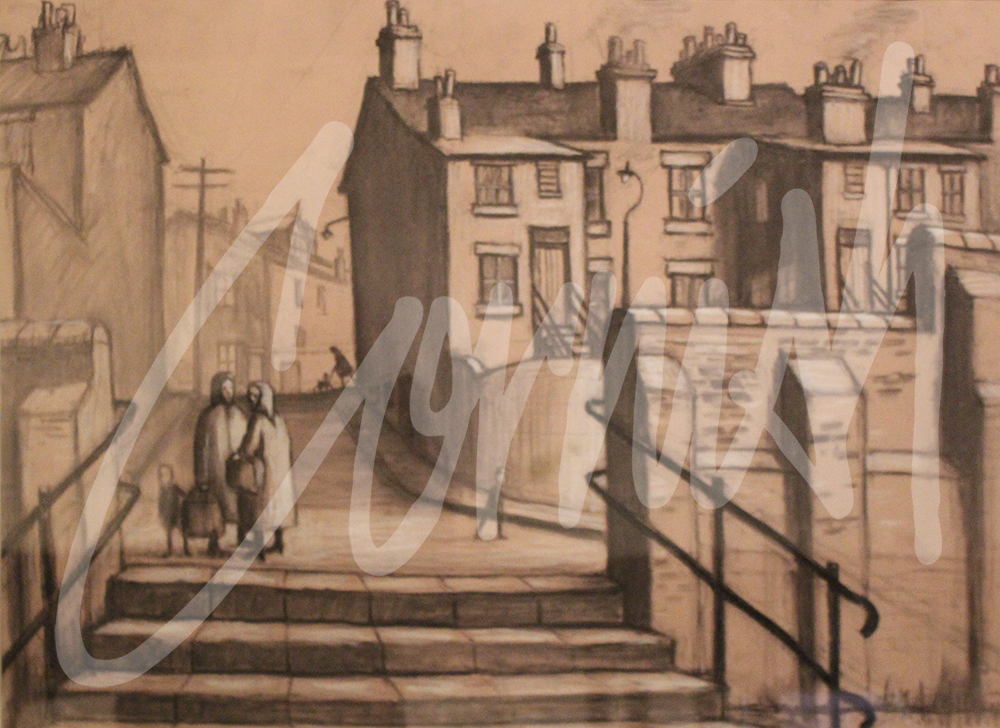
Almost all of the locations in Cornish’s pictures can be accurately identified. One exception remained on page 158 of ‘Behind The Scenes: The Norman Cornish Sketchbooks’ which shows a drawing of a football ground in Gateshead during the 1960s. The answer eventually arrived via a ‘chain reaction’ through various e-mails and social media. Six steps later the correct location was identified by the former Gateshead United goal keeper who now lives in Thailand.
The football ground on page 158 is actually Redheugh Park (pronounced Redyuff) which was the home of Gateshead Utd prior to re-locating to the Gateshead Stadium.
There are a number of paintings and drawings by Norman Cornish where there is another picture on the reverse side, sometimes incomplete, and on other occasions a finished painting/drawing. The reason for this is unknown and one possibility could be his dissatisfaction with the emerging picture resulting in a fresh start on the other side.
During the recent de-install at The Bowes Museum the reverse side of The Gantry revealed a previously unknown/unseen picture. The same scene (location unknown) was also used in a different version with children on bikes. Both images are included today and to narrow it down, realistically, the location will be somewhere in the north east!
If you think you know the answer then please make contact via This email address is being protected from spambots. You need JavaScript enabled to view it. and we will be delighted to hear from you.
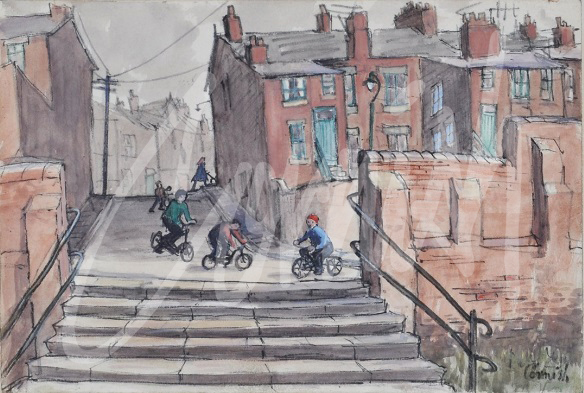
Behind The Scenes at The Bowes Museum
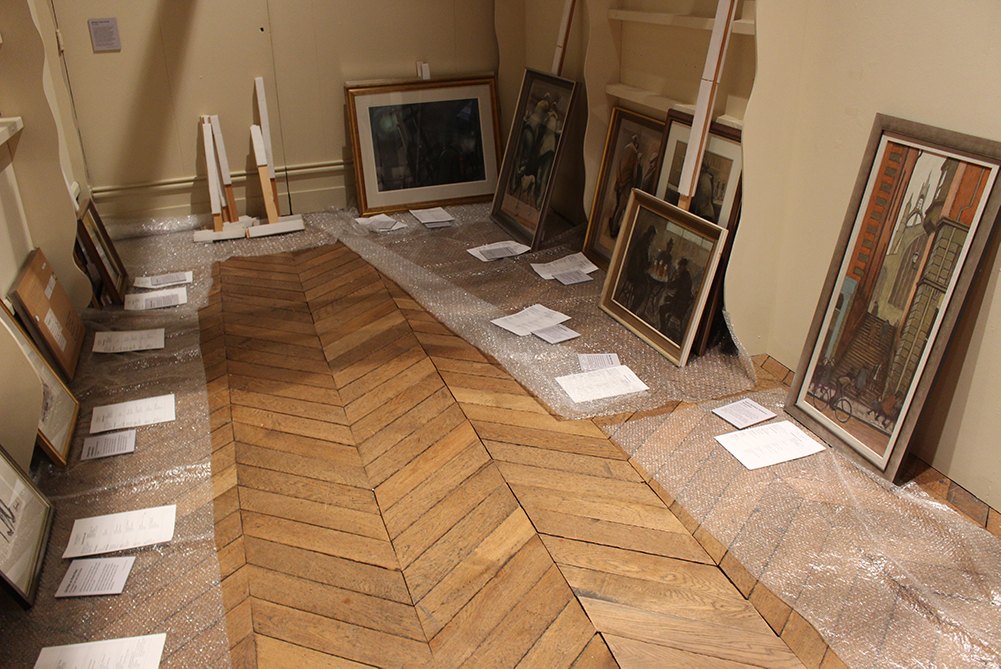
The Norman Cornish centenary celebrations began in April 2019 with the launch of the Trail in Spennymoor and a range of exhibitions throughout the year. The unprecedented circumstances of the pandemic curtailed some plans towards the end of the celebration year although the final visitor numbers to all venues exceeded 86,000 including 45,000+ at The Bowes Museum.
We were delighted with the public response to the celebrations and it was with mixed feelings that the retrospective at The Bowes Museum was finally de-installed last week and all of the paintings returned to their owners as part of a huge logistical exercise. The various tasks lasted six days including taking down works with meticulous care, ‘condition reports’ for each item, packing, labelling and finally delivery by Bradleys from Darlington, who are specialists in handling works of art and antiques. The delivery schedule alone has taken three days to return works to owners from all parts of the UK.
The exhibition has had a huge impact for so many people with some works evoking deepening and strengthening emotional responses for those who identify with the works as well as those who have simply enjoyed the experience.
Our thanks go out to all of the visitors from different parts of the UK who have travelled to support and enjoy all of the exhibitions. We would also like to place on record our thanks to the Curatorial team at The Bowes Museum and their colleagues who worked (in challenging circumstances) behind the scenes to make the whole experience so rewarding and worthwhile for visitors, and participants in the whole range of additional and related activities in challenging circumstances.
To be continued…….. with a mystery picture!
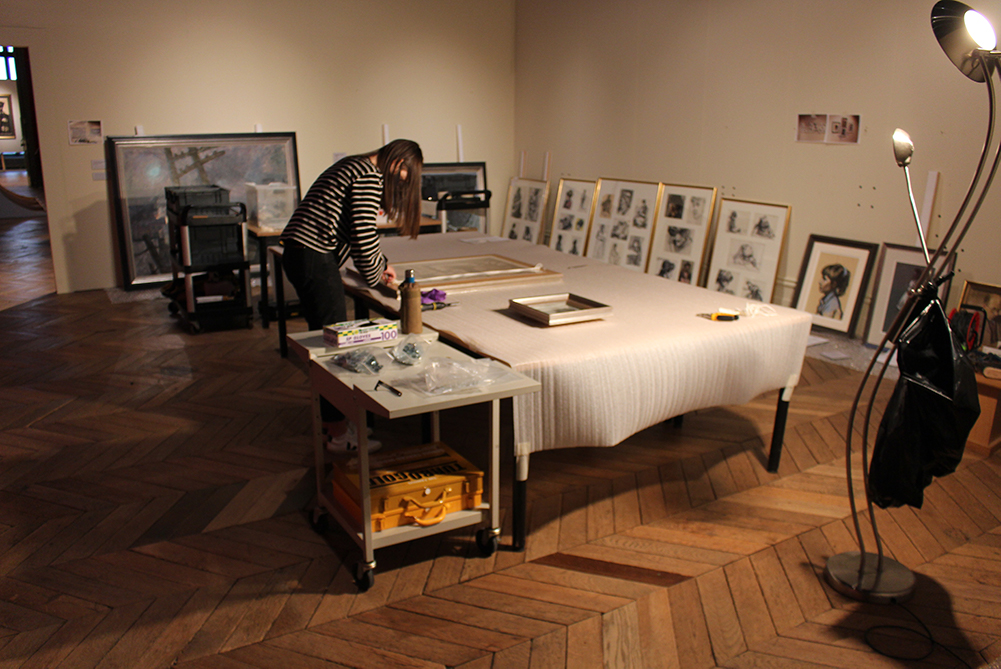
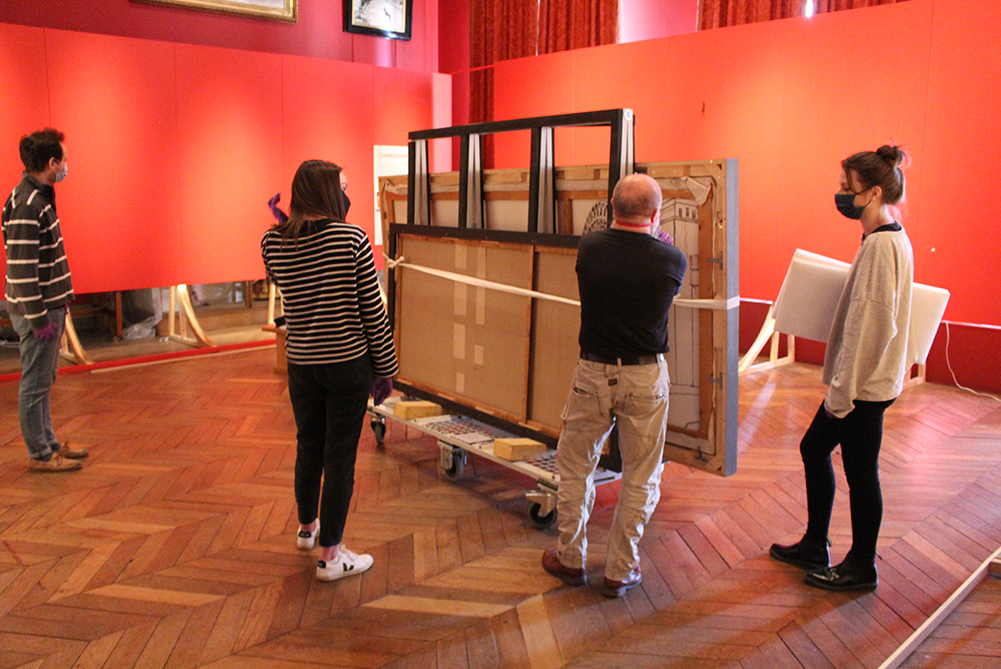
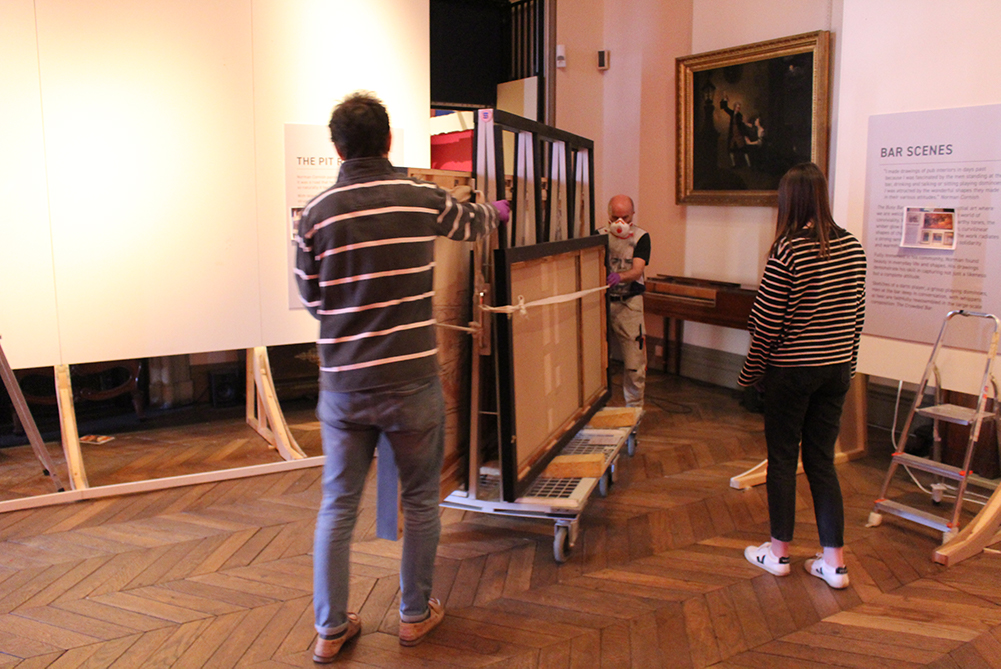
Art and Music:
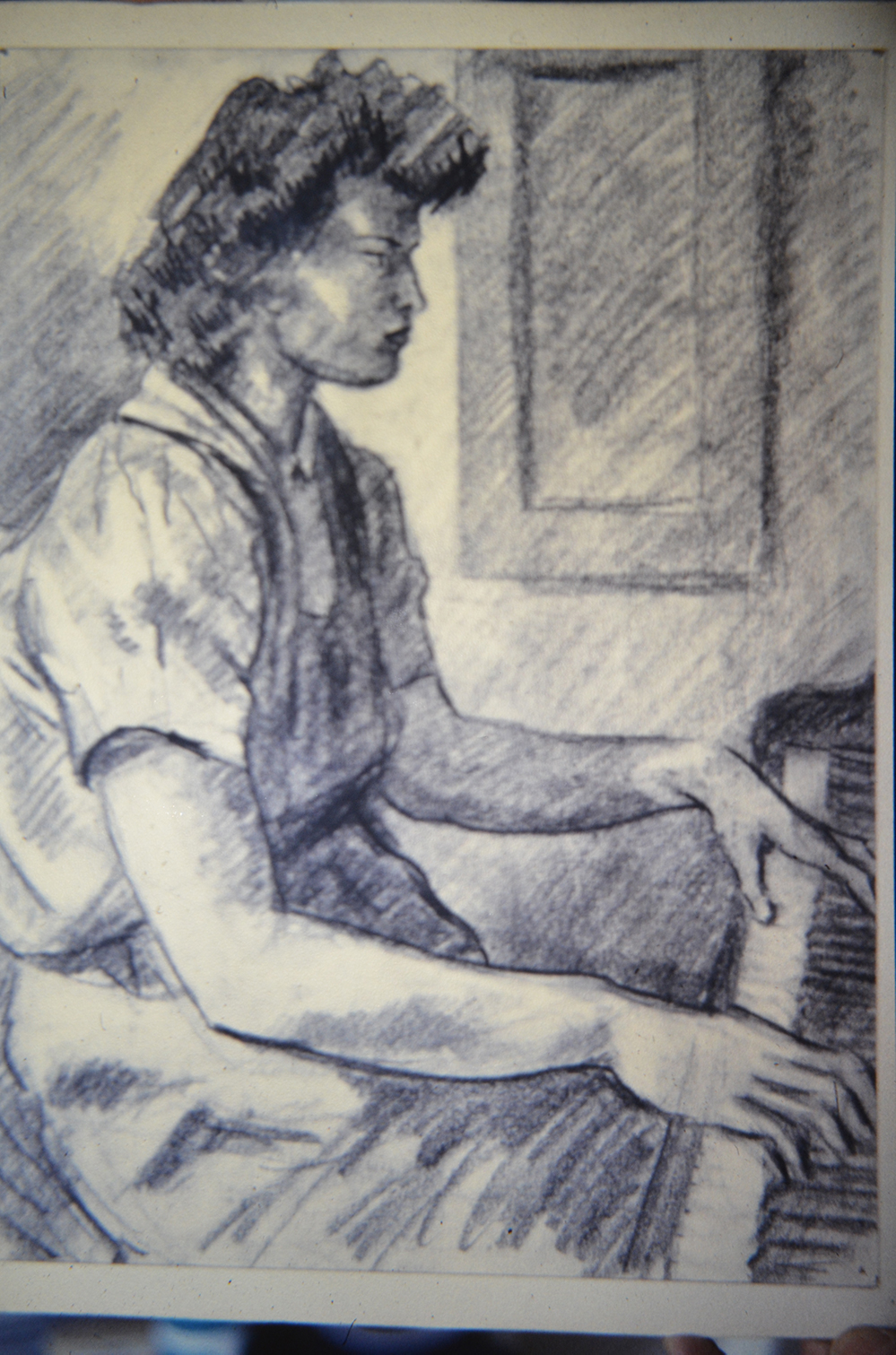
Throughout his life, Cornish enjoyed exposure to a variety of musical experiences. Some families owned pianos and accordions, and there were colliery brass bands associated with most coal mines.The standard of musicianship was very high. His wife Sarah was also immersed in music and her grandfather was a Cornet player and founder member of the Blackhall Colliery Band. Sarah’s mother played violin and at 17 Sarah herself became organist at the local Methodist Chapel in Trimdon. For many families in the region, prior to TV and wireless broadcasts, the main source of music to listen to or accompany singers was the piano.
Within his own family Cornish’s sister Ella became a pianist (image) and he became a very talented Banjo player. The image shown is when he played to Robson Green and his team prior to an interview in his studio in November 2010. The family interest was also ‘passed on’ to his children Ann and John who both enjoyed playing guitar. During his preparatory work for the Gala Mural commission in 1961, Cornish attended many rehearsals of the Spennymoor Town band to observe and draw the instruments and study marching formations.
Although he had no interest in popular music he nevertheless declared on one occasion his admiration for ‘Stranger On The Shore’ by Acker Bilk (1961) possibly identifying with the sentiment of the title.
Both Norman and Sarah enjoyed listening to music at home via their extensive collection of classical music (vinyl records) and they had a shared interest in opera. This interest was also shared by fellow artist and miner George Heslop, who was recorded in an impromptu performance of a popular piece of opera in one of the TV documentaries, filmed in the bar at The Bridge Inn, at the end of Bishops Close Street. In the 1950s Cornish once travelled with two friends to the City Hall in Newcastle to listen to Beniamino Gigli who was one of the greatest tenors of his time.
Cornish’s bar scenes are noted for his depiction of men in conversation, dominoes, pints and the convivial atmosphere of busy bars. However, pubs were also sources of a different aspect of culture and many employed a regular pianist to provide a musical accompaniment, and sometimes a mouth organ would appear via ‘one of the lads’ to add to the atmosphere. This aspect of his work, depicting the place of music in local pubs only became apparent several years ago as the previously unknown contents of his sketchbooks were finally revealed.
By a strange twist of fate, on the evening of August 1st 2014, a few hours before he passed away - Stranger On The Shore, by Acker Bilk, was broadcast on BBC Radio 2.
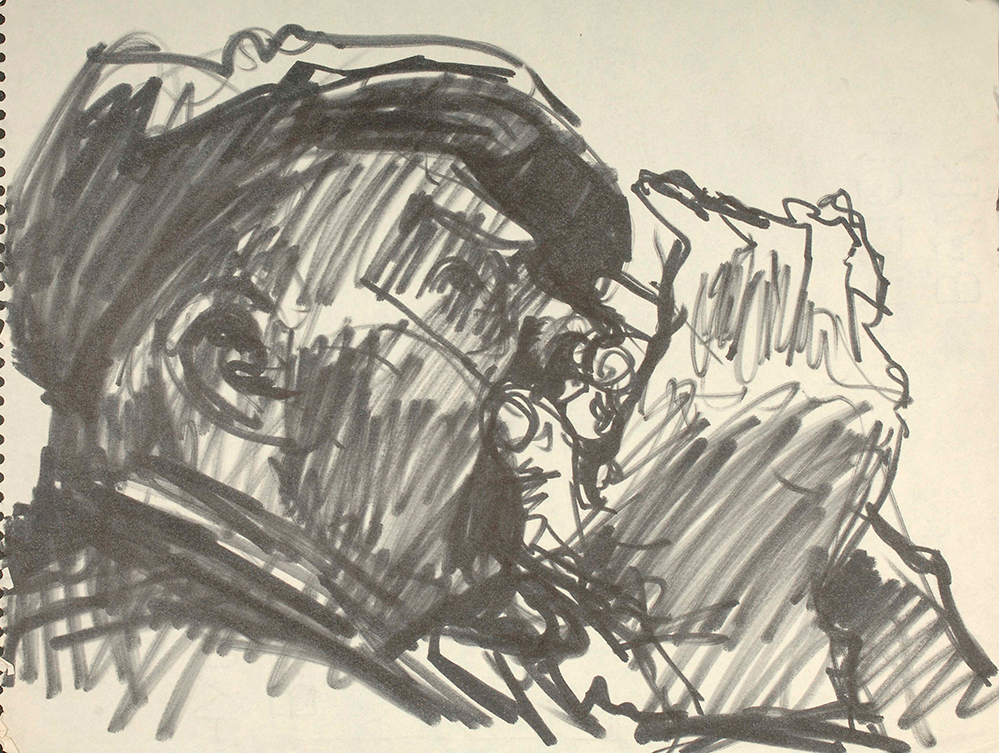
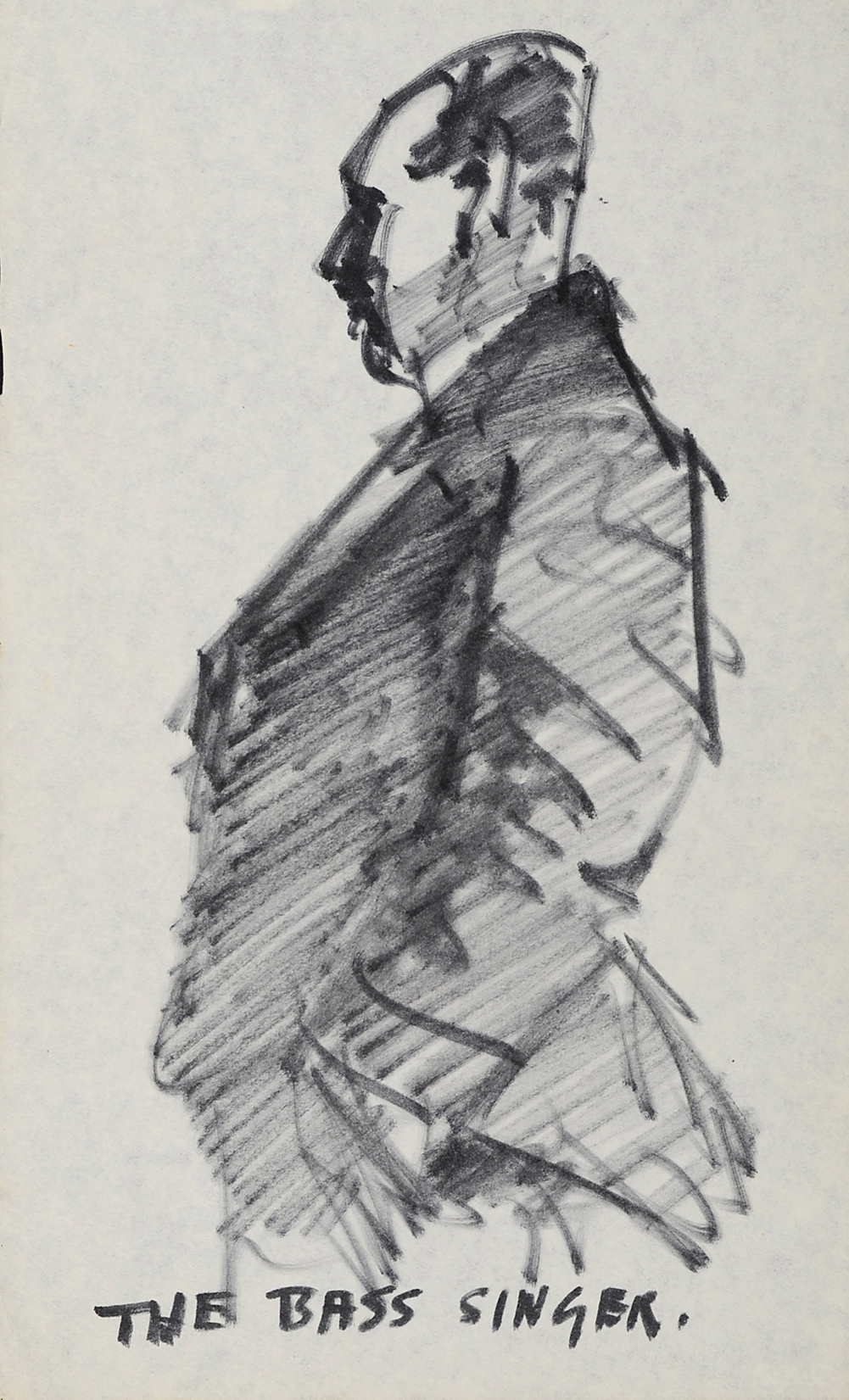
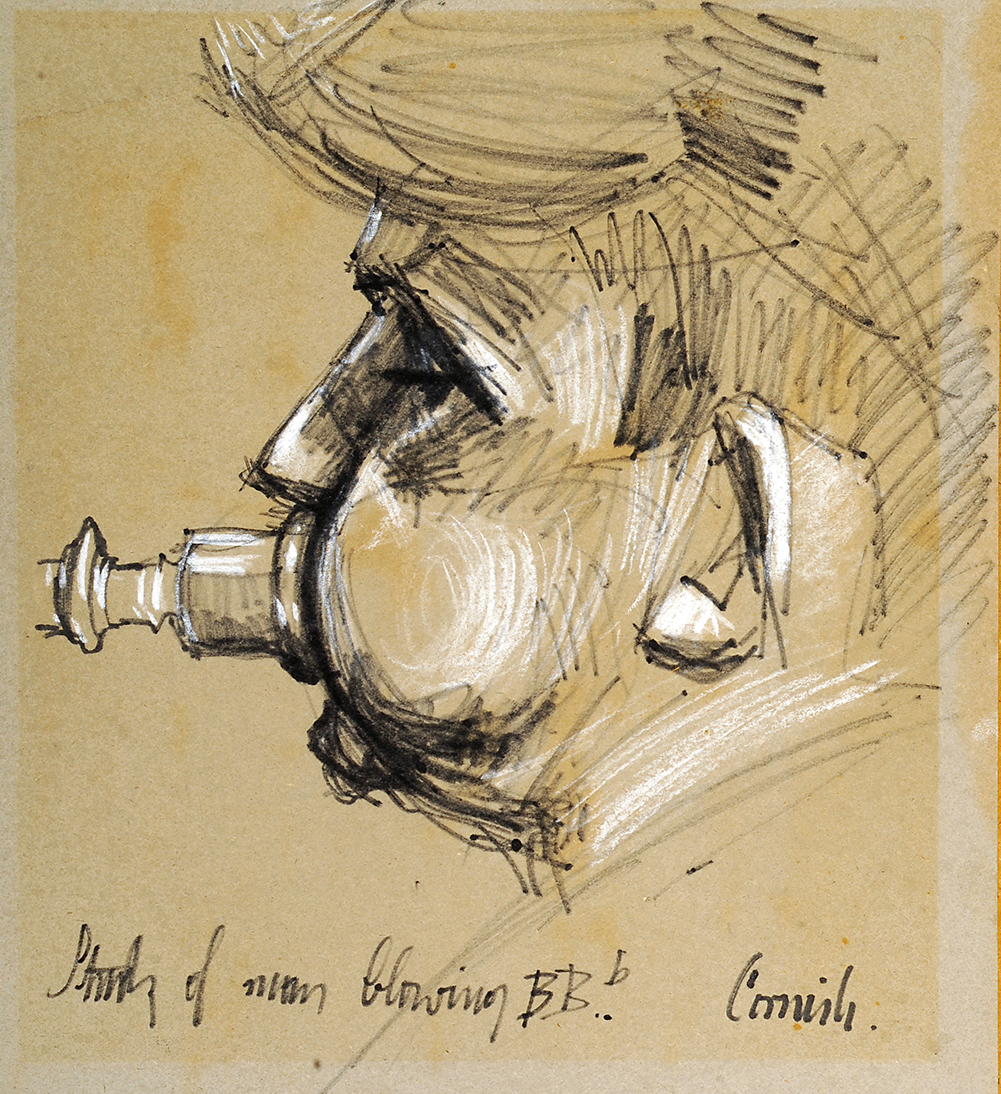
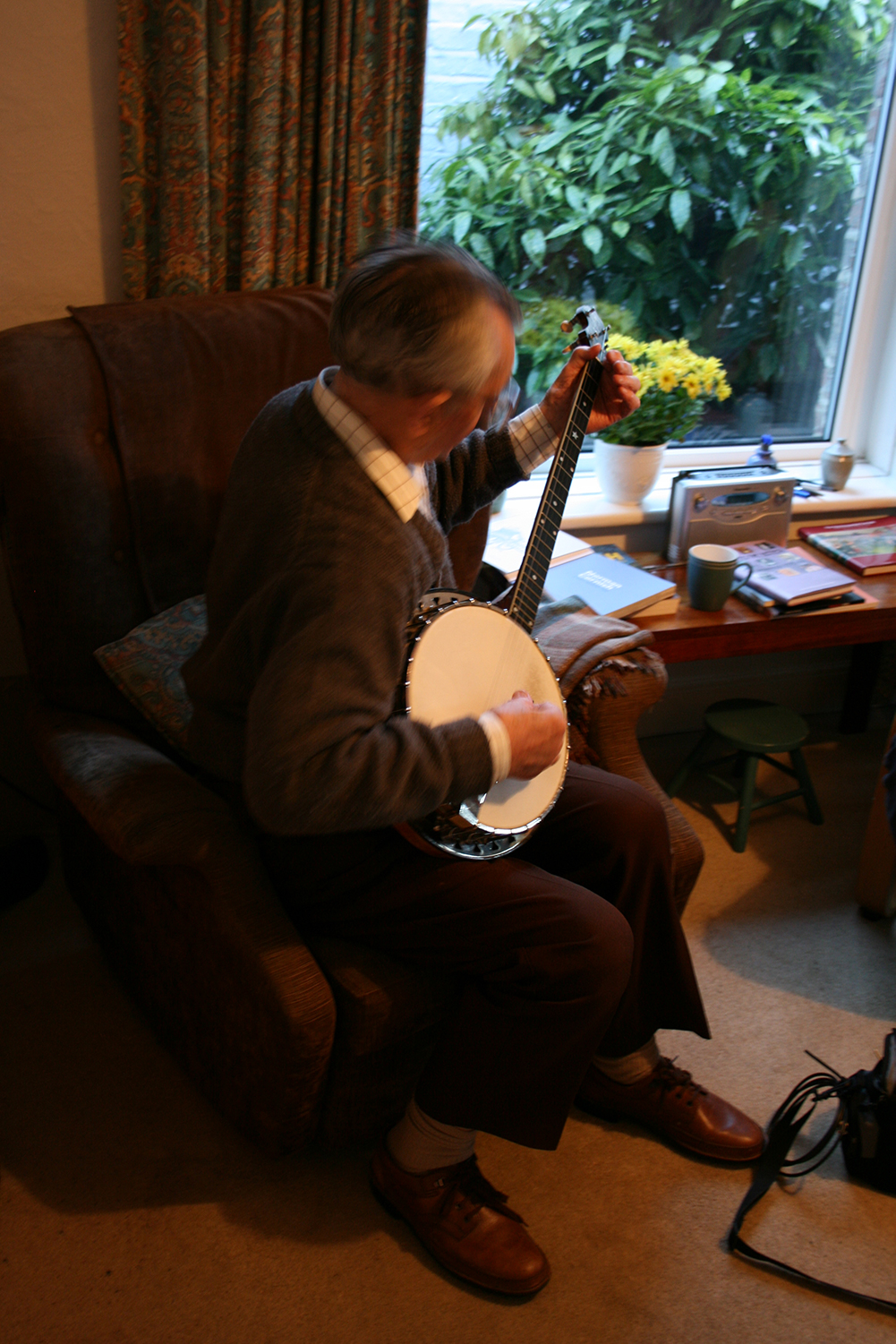
Waiting For The Result
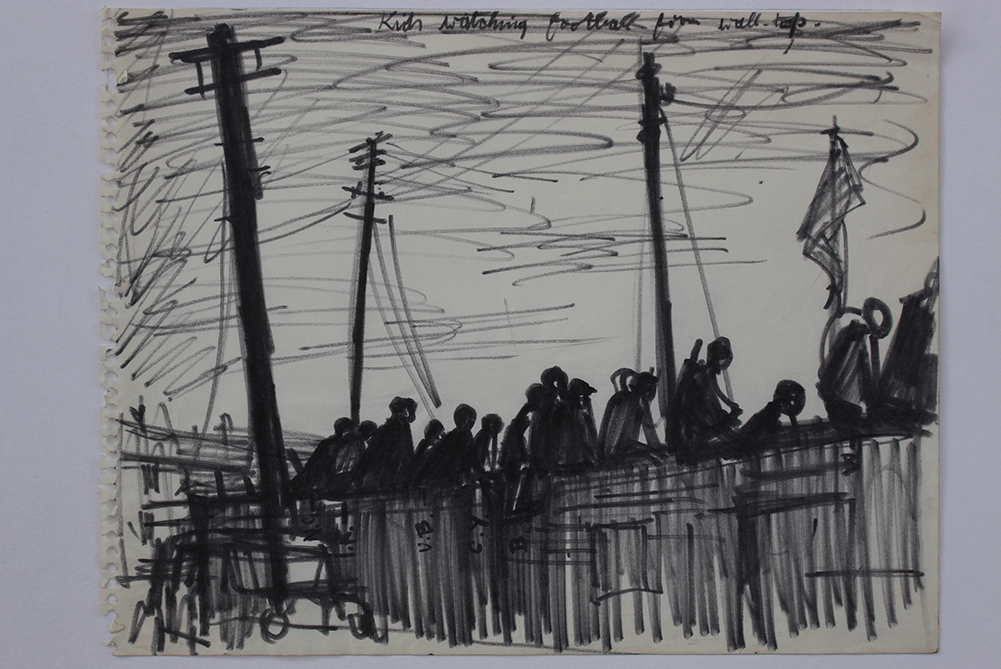
One Saturday afternoon in the 1930s, the young Norman Cornish was walking past the Spennymoor Post Office where a crowd of over 100 men had gathered outside. It was just after 4-30pm and Spennymoor United were playing Rotherham United, away, in the FA Cup. The men were waiting for the final score which was being telegraphed from Rotherham to Spennymoor. Other similar incidents over the years also made an impact on Cornish as he became aware of the importance of sport in the lives of folks in the north east which has often been referred to by some writers as, ‘the hot bed of football’.
The regional landscape during these times was dominated by coal mines, and pit heaps, but there was also room for Miner’s Recreation Grounds, with pitches for football, cricket, tennis- courts and bowls. Although he was very fit from physical work underground, he didn’t participate in any sports and recalls in his autobiography how he went to watch his father play football for a local team. But his abiding memory was of ‘freezing to death’ on the touchline. The first evidence of a sport related picture was, ‘The Flood-lit Match’ (12 Guineas) exhibited in 1962 at The Stone Gallery in Newcastle, which had re-located to St Mary’s Place near The Haymarket. The exhibition was listed with reviews in the National Press and was one of a number of successful exhibitions at The Stone Gallery during this era.
Other examples were to follow during the 60s including a drawing of the Durham Road entrance to The Brewery Field, home of Spennymoor United which most likely attracted his attention with the unusual aspect of spectators and telegraph poles. The letters in the drawing are reminders of his colour notes NG - Neutral Green, CY- Chrome Yellow, B-Blue or Black, UB- Ultramarine Blue or Umber Brown.
The Man With Scarf : was included in two exhibitions during the centenary year but was first exhibited in 1969 at The Stone Gallery exhibition Men of The North East. The colours of the scarf are of a Spennymoor United supporter although sometimes mistaken for the other team in the region with the same colours. The lovely drawing of Redheugh Park, former home of Gateshead United, with St Mark’s Methodist Church in the background, is also from the same era, and recently correctly identified via social media by a former Gateshead Utd goal-keeper who now lives in Thailand!
There is no evidence in Cornish’s body of work showing Bowls matches or Horse Racing which he was once advised to consider as a subject, but which he quickly rejected. His pub scenes including other games, greyhounds and whippets are well documented and in one example he captures men at a crowded bar watching ‘The Big Fight.’ Perhaps Cooper versus Ali ? In conversation many years ago he was honest enough to explain that his interest in sport helped him to join the conversations with other workmates, and men in pubs enjoying the craic. The drawing of Redheugh Park (pronounced Redyuff) is featured in Behind The Scenes: The Norman Cornish Sketchbooks.
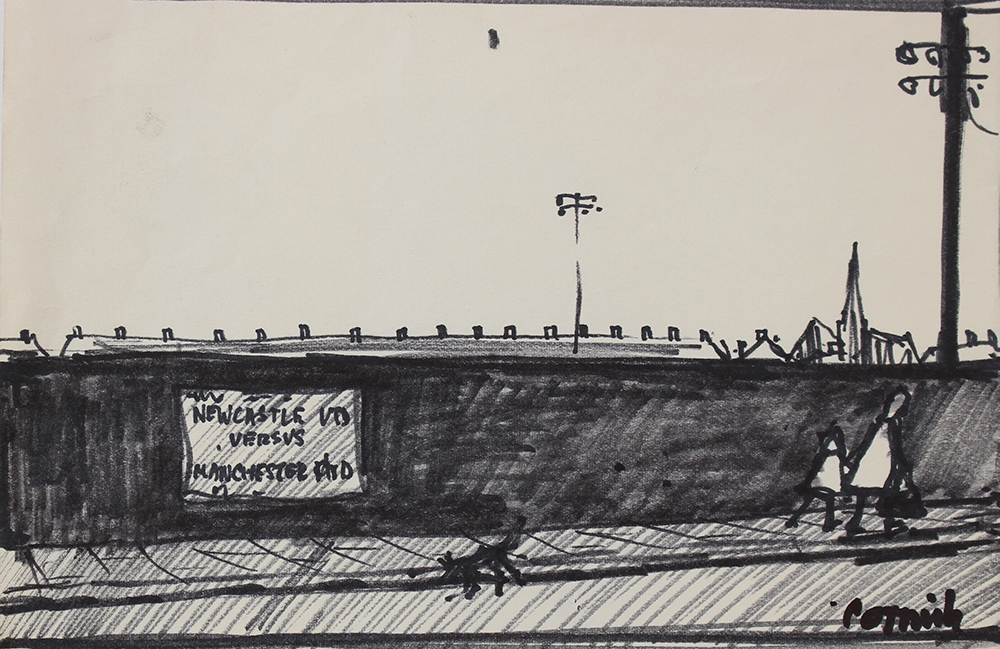
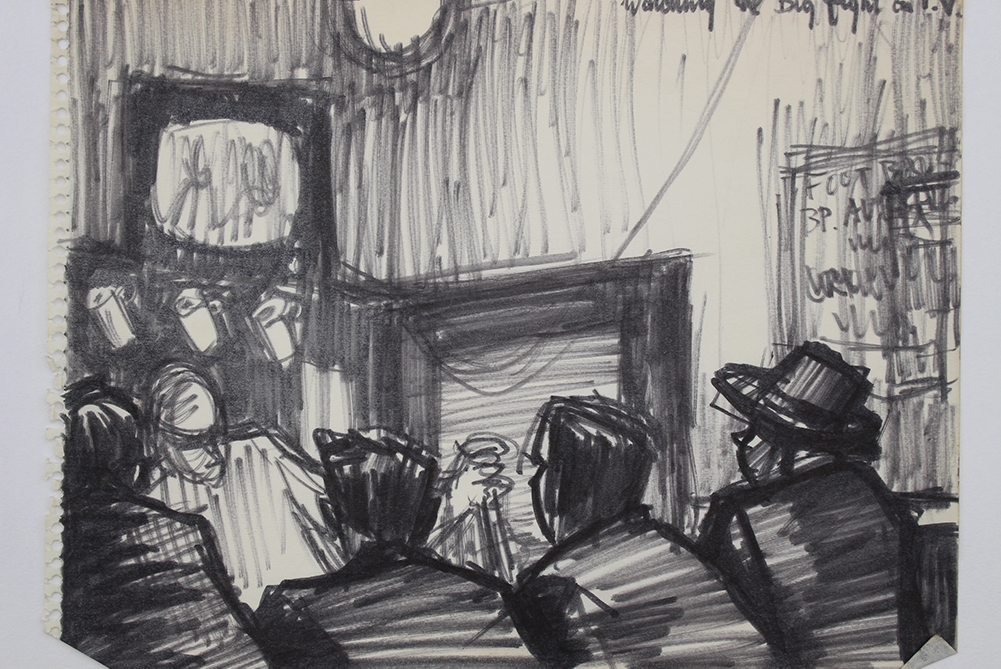
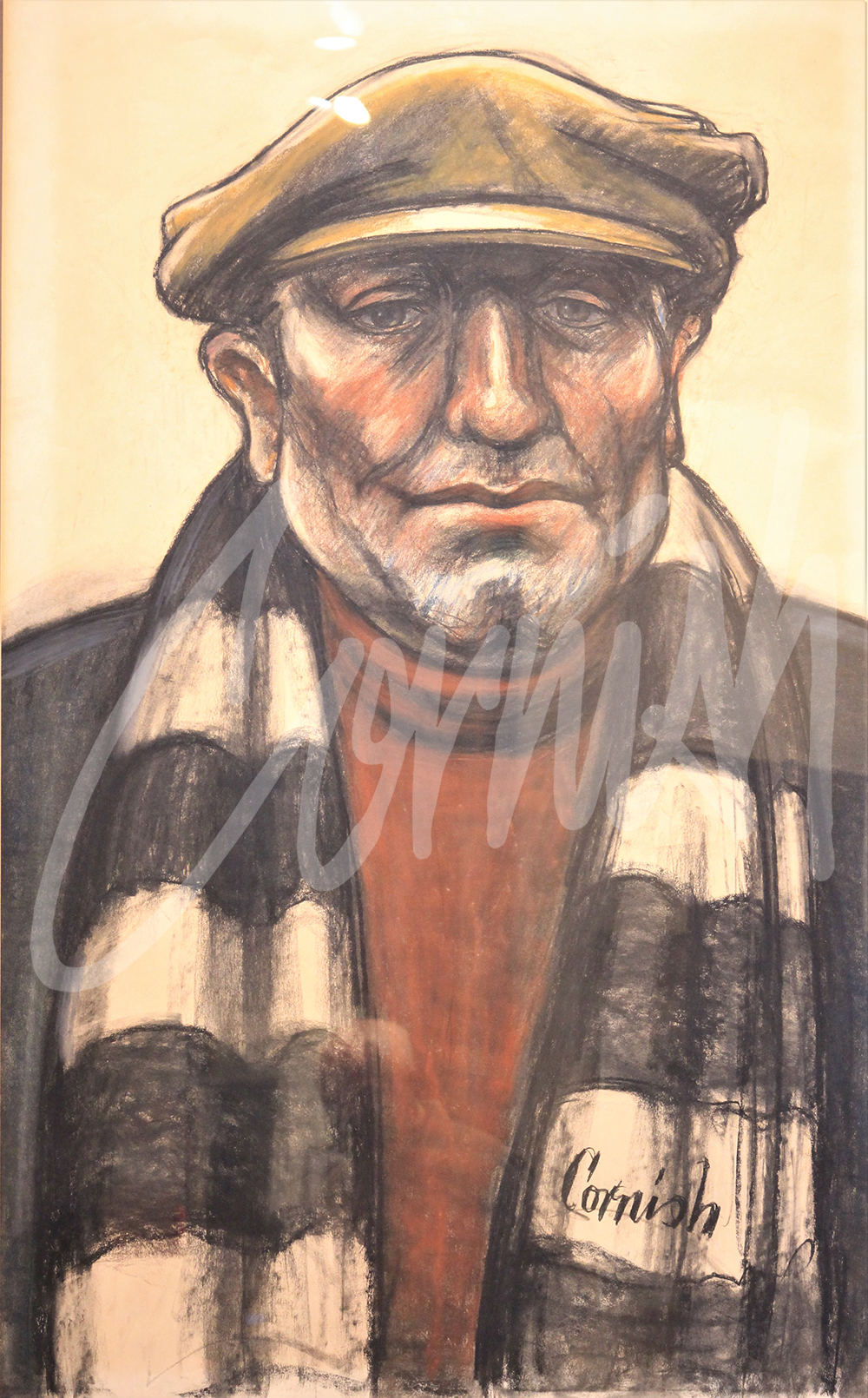
The Norman Cornish Trail celebrates two years
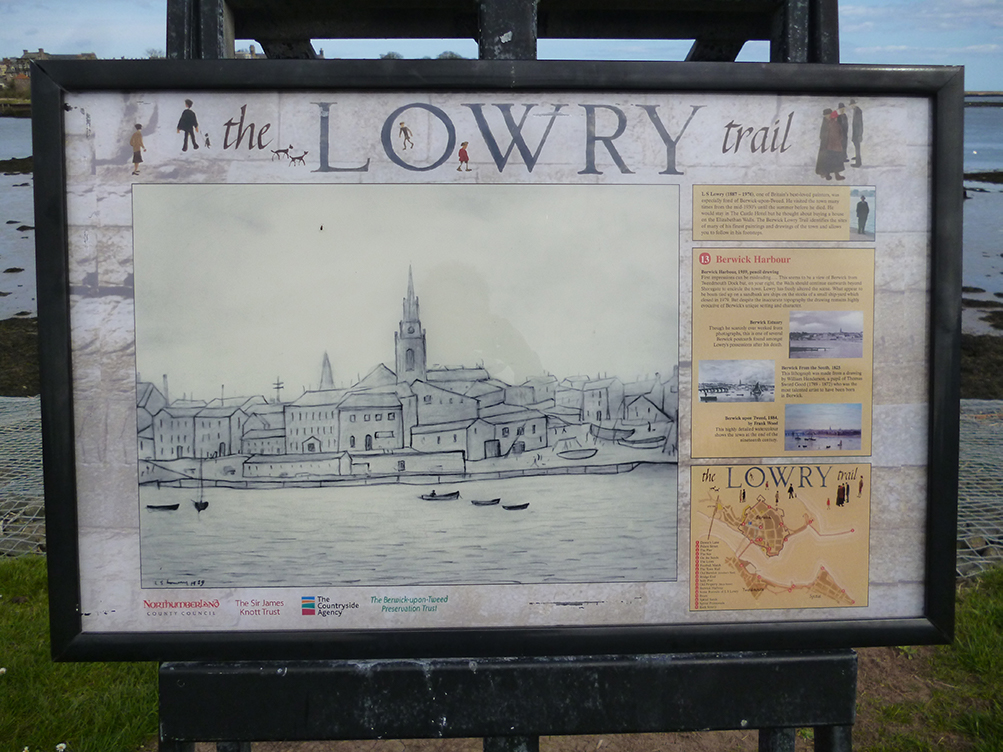
Norman Cornish passed away on August 1st 2014 and in the immediate months following his funeral there were many enthusiastic ideas to permanently commemorate his life and work. Suggestions included statues, plaques and even a monument in the middle of a roundabout.
Cornish found inspiration for his work in the people and places around Spennymoor, and many of the locations of his iconic images can still be seen today, although some have obviously changed in character or disappeared altogether. The opportunity to develop a Norman Cornish Trail in his home town was therefore irresistible, with potential for much broader benefits for Spennymoor, its residents, and the wider area.
The initial research began with enquiries to ‘Visit Yorkshire’ regarding The Hockney Trail, but the Hockney Trail concept was rejected because it entailed access by car only. A visit was arranged to The Lowry Trail in Berwick upon Tweed, which was launched in 2014, to coincide with an exhibition of Lowry’s works based upon his many visits to Berwick. An interesting route, however the 24 locations took over three hours to visit while walking.
Durham County Council supported an initial feasibility study and a community arts co-ordinator, along with family members, and an officer from Spennymoor Town Council were later appointed to oversee the design and development of the Norman Cornish Trail. Images and content were agreed, and production of the information panels commenced in 2018 following agreement about the locations, to provide a safe and sensible route which could be enjoyed in about an hour.
The Norman Cornish Trail in Spennymoor opened in April 2019 to launch his Centenary Year. Over 15,000 visitors have enjoyed this fascinating walk of 1.5 miles visiting 10 of the famous locations which inspired some of his most iconic paintings. The information panels at each location include an audio version of the content which may be accessed via a QR code at each point of interest.
Follow in the footsteps of one of the leading 20th Century British artists in his home town and also visit the Coming Home exhibition at the Bob Abley Gallery in Spennymoor Town Hall. Free parking is available at the back of the Town Hall and the journey begins at the John Kitson Archway where a selection of Cornish’s images, wonderfully illuminated on glass panels, can be viewed. Here you can collect a free souvenir brochure guide to the trail or download a version at www.normancornish.com/trail
